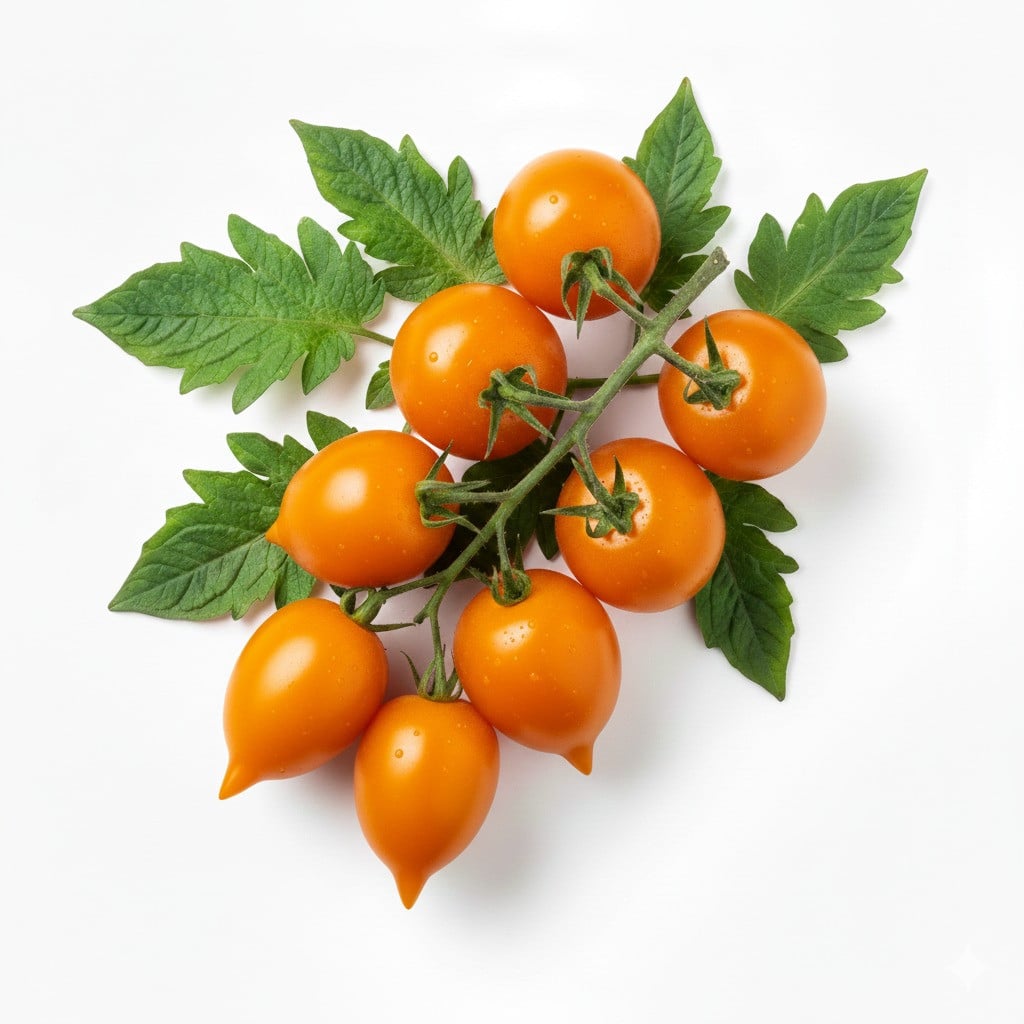Tomato (Cocktail bush tomato)

Tomato (Cocktail bush tomato)
Solanum lycopersicum
Plant family
Solanums (Solanaceae)
Cultivation Break
4 Years
Season Overview
Propagating
Planting
Harvest
J
F
M
A
M
J
J
A
S
O
N
D
Details
Light requirement
Sunny
Water requirement
Moist
Soil
Medium (loamy)
Nutrient requirement
High
Light germinator
Germination temperature
20 - 25 °C (Degrees Celsius)
Plant distance
50 cm
Row spacing
70 cm
Seeding depth
0.5 cm
Instructions
The season for this plant has not yet begun. The following instructions are for the beginning season.
Mid of March
Propagating
Beginning of April
Transplanting
Beginning of June
Harden
Description
Cocktail tomatoes are small tomatoes that come in different colors, shapes and flavors. However, most often they are sweet and are excellent for snacking. If they belong to the vine tomatoes, unlike stick tomatoes, they have a determinate growth. So, they stop growing at some point. They also stay smaller overall, which makes them great for growing in pots on the balcony. Like their relatives, they are a sun-hungry and frost-sensitive nightshade crop. However, there are often differences in cultivation between varieties. Therefore, specific cultivation and care instructions for the respective variety should always be followed.
Origin:
Central and South America
Growing tips
Tomatoes have a high demand for light, heat, water and nutrients. They are grown from seed from March on the windowsill. The seedlings should be planted deep, until the first leaves appear, so that the root system is enlarged by additional lateral roots. Unlike most other crops, you should always plant tomatoes in the same spot. Undersowing with low-growing plants works well. - Water tomatoes: Depending on whether you preplant or direct-seed tomatoes, and depending on the location and variety, you will need to water your tomato plants with varying frequency. Tomatoes can develop very deep roots, which can then even draw water from the groundwater. In this case, you need to water them little or not at all. Pay attention to the leaves, if they hang down limply you should water your tomato plants. Especially in pots, raised beds and raised beds, the soil dries out more quickly, so you need to water them more often.
Companion Plants
Asparagus
Basil
Bean (Broad bean / Faba bean / Field bean)
Bean (Dwarf bean)
Bean (Runner bean)
Broccoli
Brussels sprouts
Cabbage (Cabbage)
Cabbage (Savoy cabbage)
Carrots
Cauliflower
Celery (Celeriac / Celery root)
Celery (Celery)
Chili
Chives
Collard greens (Kale)
Collard greens (Tuscan kale / Dinosaur kale / Palm tree kale)
Common marigold
Cress
Garlic
Kohlrabi / German turnip / Turnip cabbage
Leeks
Lettuce (Common chicory)
Lettuce (Endive / Escarole / Erisée)
Lettuce (Lamb's lettuce)
Lettuce (Lettuce)
Lettuce (Radicchio / Italian chicory)
Lettuce (Sugar loaf)
Mint
Napa cabbage / Chinese cabbage
Onion
Onion (Spring onion)
Oregano
Pak Choi
Parsley
Pepper / Paprika
Radish
Radishes
Spinach (Summer)
Antagonistic Plants
Diseases
Root Rot
Dry rot of crucifers
Powdery mildews
Brown rot
Blossomrot
Grey mold
Early blight of potato
Pests
Land snails
Thrips
Aphids
Spider mites
White fly